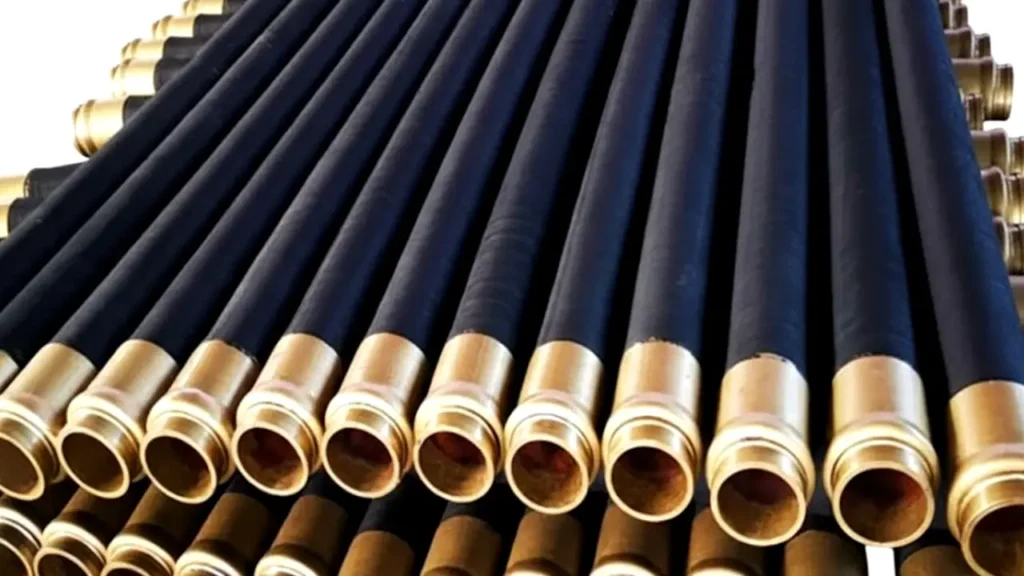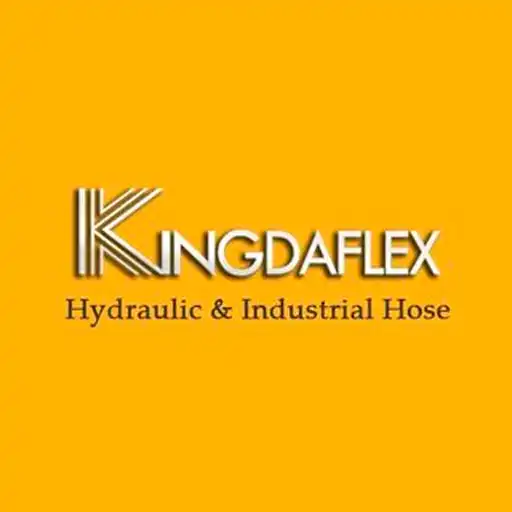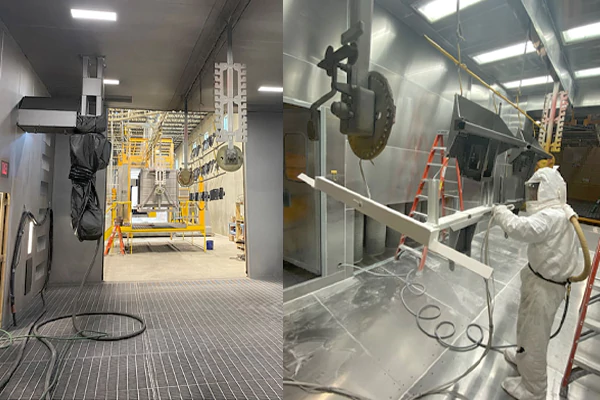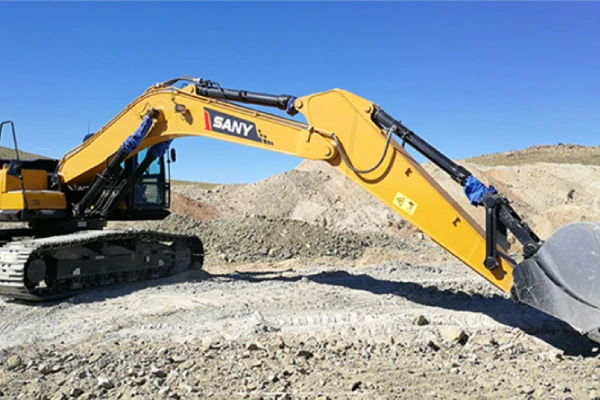A concrete pump blockage isn’t just a nuisance; it’s a costly downtime event that can ruin a pour. Whether you are dealing with segregation, bleeding, or pipe jams, identifying the root cause immediately is critical.
As a manufacturer of heavy-duty concrete pump hoses, Kingdaflex understands the hydraulic dynamics of concrete flow. This guide covers the technical reasons behind blockages—from incorrect aggregate ratios to worn-out hoses—and how to fix them.
Quick Troubleshooting Table
| Symptom | Likely Cause | Immediate Fix |
| High Pump Pressure | Blockage forming in the reducer or elbow. | Stop pumping. Reverse the pump for 2-3 strokes to relieve pressure. |
| Segregation (Bleeding) | Mix is too wet; Worn coupling gaskets. | Add fines/cement to mix; Replace leaking gaskets immediately to stop grout loss. |
| Rock Jam | Aggregate too large for hose diameter. | Follow the 1/3 Rule. Switch to a larger diameter hose (e.g., 5″ or 6″). |
| Hose Kinking | Poor hose flexibility; Acute bend radius. | Straighten the line. Upgrade to Kingdaflex steel-wire reinforced hoses for better bend radius. |
| Dry Pack | Concrete slump too low (too dry). | Do not add water in the hopper blindly. Use a superplasticizer if possible. |
Common Causes of Concrete Pump Blockages

Successfully pumping concrete requires attention to many factors to avoid costly delays and potential hazards. Common issues are often related to the concrete mix itself, the equipment, and the operational procedures on site. Addressing these problems effectively prevents downtime and ensures a smooth workflow.
The Concrete Mix Design: The #1 Cause
The quality of the concrete mix is the most frequent culprit behind blockages. To ensure smooth pumping, specific technical parameters must be met:
- The “1/3 Rule” for Aggregates: Always adhere to the diameter rule: The maximum size of the aggregate should not exceed 1/3 of the hose’s inner diameter. For example, if you are using a 5-inch (125mm) Kingdaflex hose, your max aggregate size must be under 40mm. Exceeding this ratio creates “rock jams” where stones interlock and block the flow.
- Correct Slump (Workability): The ideal slump for pumping is typically between 150mm and 180mm (6-7 inches).
- Too Dry (<100mm): High friction prevents the pump from pushing the material.
- Too Wet (>220mm): Causes segregation (bleeding). The water/cement paste separates from the aggregate, leaking through gaps and leaving dry rocks behind to form a hard plug.
Equipment Failure: Worn Hoses & Gaskets
Even a perfect mix will block if the delivery system is compromised. This is where equipment maintenance becomes critical.
- Worn-out Inner Tubes: Over time, the inner rubber liner of a hose wears down due to the abrasive nature of concrete. A rough or pitted inner wall drastically increases friction, leading to pressure spikes and blockages.
- Expert Tip: Inspect hoses regularly. Kingdaflex Concrete Pump Hoses feature a high-abrasion resistant NR/SBR liner specifically engineered to maintain a smooth surface for 25,000+ cubic meters of flow, significantly reducing blockage risks compared to standard rubber hoses.
- Leaking Couplings (Grout Loss): If the gasket at the coupling is damaged or the clamp is loose, water and cement paste will escape under pressure. This “grout loss” leaves the remaining aggregate dry and un-pumpable. Check your gaskets and clamps daily.
Operator Error: Priming & Speed
How the pump is operated is just as important as the equipment itself.
- Insufficient Lubrication: Never start pumping dry. Always prime the line with a water-cement slurry or a commercial priming agent to lubricate the hose walls before the concrete arrives.
- Pumping Too Fast: Starting the pump at full speed can pack the material into the reducer before it has a chance to flow. Always start slowly and increase speed gradually once a steady flow is established at the discharge end.
How to Safely Locate and Clear a Blockage

⚠️ WARNING: Concrete pumps operate under extreme pressure. NEVER open a coupling or disconnect a hose while the system is pressurized. Doing so can cause serious injury or death.
If a blockage occurs, follow these standard industry procedures to clear it safely:
1. The “Reverse Pump” Technique
The moment you notice the pump pressure spiking (indicating a jam), stop the pump immediately. Switch the pump to REVERSE for 2-3 strokes.
- Why? This sucks the concrete back from the blockage point, relieving the pressure and often breaking up the “logjam” of aggregates.
- Next: Switch back to forward pumping. If the concrete moves, the blockage is cleared. If pressure spikes again, stop immediately. Do not force it.
2. The “Hammer Tap” Test
To find exactly where the blockage is located within the pipeline:
- Walk along the pipeline and firmly tap the metal pipes or hose couplings with a hammer.
- Ring (Clear): A hollow “ringing” sound indicates the pipe is empty or fluid is moving.
- Thud (Blocked): A dull, solid “thud” indicates the section is packed solid with concrete. This is your blockage point.
- Note: Blockages most frequently occur at reducers, elbows, and the rubber hose at the boom tip.
3. Clear and Re-Prime
Once the blockage is located and pressure is fully relieved (gauge reads zero):
- Carefully open the coupling at the blockage point.
- Clean out the packed concrete and aggregates manually.
- Crucial Step: Before reconnecting, add a small amount of water or cement slurry to the cleared section to lubricate it.
- Reconnect and resume pumping slowly.
Concrete Hose Maintenance

Proper maintenance is critical for extending the life of a concrete pump hose and ensuring safe, efficient operation on the job site. The highly abrasive nature of concrete and the intense pressures involved mean that these hoses are subject to significant wear and tear.
Regular inspection and proper care prevent premature failure, costly repairs, and dangerous blowouts. Maintaining your hoses involves a combination of daily checks, thorough cleaning, and careful storage practices to protect them from damage and degradation.
- Daily Inspection: Before and after each use, visually inspect the entire length of the hose for cuts, kinks, bulges, abrasions, or exposed reinforcement. Pay special attention to the couplings, as they are prone to wear and tear.
- Thorough Cleaning: Immediately after each pour, clean the hose to prevent concrete from hardening inside. Use a sponge ball or other cleaning tool, and flush with water until it runs clear. Hardened concrete residue can cause blockages and damage the hose’s inner lining.
- Proper Storage: Store hoses in a clean, dry, and cool area away from direct sunlight, which can cause the rubber to dry out and crack. Coil the hoses loosely and hang them to prevent kinks and reduce stress on the material.
- Pressure Monitoring: Always operate within the hose’s specified pressure rating to avoid over-pressurization, which can cause internal damage and lead to a sudden, dangerous failure.
Prevent Downtime with Premium Equipment
Detailed maintenance and correct operation are vital, but they cannot compensate for inferior equipment. Many job site blockages are caused by low-quality hoses that have delaminated, kinked, or developed rough internal surfaces due to poor abrasion resistance.
At Kingdaflex, we engineer concrete pump hoses to keep your project moving.
- Smoother Flow: Our hoses feature a specialized NR/SBR synthetic rubber inner tube that minimizes friction, allowing concrete to flow with less resistance.
- Longer Lifespan: Reinforced with high-tensile steel wire, our hoses are tested to withstand 25,000 to 30,000 cubic meters of concrete placement.
- Kink Resistance: Designed to maintain a full cross-section even when bent, preventing flow restriction at the boom tip.
Recommended Products for Smooth Pumping:
- Steel Wire Reinforced Concrete Pump Hose: The industry standard for high-pressure boom applications (85 Bar W.P.).
- Textile Reinforced Concrete Discharge Hose: Lightweight and flexible, ideal for the discharge end.
Don’t let a burst hose stop your pour.
FAQs
Why does my concrete pump hose keep blocking at the reducer?
This is usually due to a “transition jam.” If the reduction is too abrupt (e.g., 5 inch to 3 inch) or if the reducer is worn out, the concrete cannot compress fast enough. Ensure your reducer length is sufficient and check for internal wear.
Can I add water to the hopper to fix a blockage?
No. Adding water to a blockage often makes it worse by washing away the cement paste and leaving a “dry pack” of rocks. The blockage must be cleared manually or by reversing the pump.
How often should I replace my concrete pump hose?
It depends on the volume. A standard quality hose might last 10,000-15,000 cubic meters. Kingdaflex premium hoses are engineered to handle 25,000-30,000 cubic meters under normal conditions.




